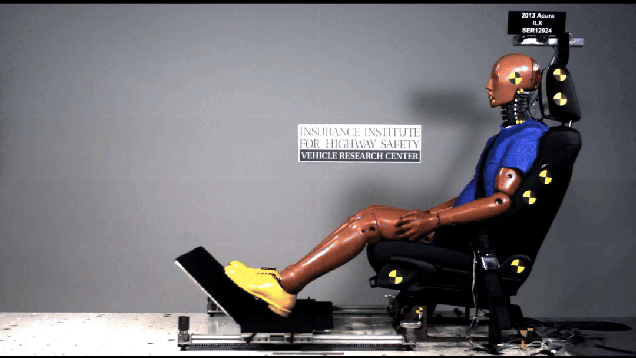Understanding the Importance of Properly Adjusted Head Restraints in Vehicles
The safety of vehicle occupants has always been a paramount concern for manufacturers, regulators, and consumers alike. Among the various safety features in modern cars, head restraints—often referred to as headrests—play a crucial role in protecting passengers during collisions. Recent insights from the Insurance Institute for Highway Safety (IIHS) shed light on the significance of these components, emphasizing that their proper adjustment can greatly enhance safety in the event of an accident.
What Are Head Restraints and Why Are They Important?
Head restraints are designed to limit the movement of the head during a crash, particularly in rear-end collisions. They work by reducing the risk of whiplash, a common injury that occurs when the head is suddenly jerked backward and then forward. According to the IIHS, properly adjusted head restraints can significantly decrease the likelihood of such injuries, making them an essential feature in vehicle safety.
A study published in the Journal of Safety Research found that the risk of whiplash injuries can be reduced by up to 50% when head restraints are positioned correctly. This statistic underscores the importance of not only having head restraints in vehicles but also ensuring they are adjusted to fit the occupant’s height and seating position.
How to Properly Adjust Head Restraints
Adjusting head restraints may seem straightforward, but many drivers and passengers overlook this critical step. Here’s how to ensure your head restraint is set correctly:
1. **Height Adjustment**: The top of the head restraint should be aligned with the top of your head. If it’s too low, it won’t provide adequate support during a collision.
2. **Distance from the Head**: Ideally, the head restraint should be as close to the back of your head as possible, with no more than a couple of inches of space. This minimizes the distance your head can move in a crash.
3. **Seating Position**: Ensure that your seat is in an upright position. A reclined seat can alter the effectiveness of the head restraint, making it less likely to prevent injury.
4. **Regular Checks**: It’s a good practice to check the adjustment of your head restraint whenever you change drivers or passengers, as different individuals may require different settings.
Real-World Implications of Proper Head Restraint Use
The implications of properly adjusted head restraints extend beyond individual safety; they contribute to broader public health outcomes. The National Highway Traffic Safety Administration (NHTSA) reports that whiplash injuries account for a significant percentage of all traffic-related injuries. By promoting awareness and proper adjustment of head restraints, we can potentially reduce the number of these injuries, leading to lower healthcare costs and improved quality of life for many individuals.
Case studies from various countries have shown that public awareness campaigns focusing on vehicle safety features, including head restraints, have led to a measurable decrease in whiplash claims. For instance, a campaign in Sweden resulted in a 20% reduction in whiplash injuries over a five-year period, demonstrating the effectiveness of education in enhancing vehicle safety.
Expert Opinions on Head Restraint Safety
Experts in automotive safety emphasize that while advancements in vehicle design and technology have improved overall safety, the human factor remains critical. Dr. David Zuby, chief research officer at the IIHS, states, “Even the best-designed safety features can only protect you if they are used correctly. Head restraints are a prime example of this.”
Furthermore, automotive safety advocates encourage manufacturers to make head restraint adjustments more intuitive. Some modern vehicles now feature easy-to-use mechanisms that allow for quick adjustments, ensuring that all occupants can benefit from this vital safety feature.
Enhancing Vehicle Safety Through Education
As consumers, it is essential to prioritize safety features when purchasing a vehicle. Understanding the role of head restraints and ensuring they are properly adjusted can significantly impact your safety on the road. Car manufacturers and safety organizations must continue to educate the public about the importance of these features, not only at the point of sale but also through ongoing safety campaigns.
In summary, properly adjusted head restraints are a critical component of vehicle safety that should not be overlooked. By taking the time to adjust these features correctly, drivers and passengers can significantly reduce their risk of injury in the event of a collision. As we continue to advance in automotive safety, let us not forget the simple yet effective measures that can protect lives on the road.

